- All
- Product Name
- Product Keyword
- Product Model
- Product Summary
- Product Description
- Multi Field Search
What is ultrasonic tinning?Ultrasonic tinning is a kind of welding method that does not use flux. The ultrasonic probe produces cavitation in the molten solder core through mechanical vibration at ultrasonic frequency, and removes the oxide film on the metal surface for smooth and clean tinning. Ult
What is ultrasonic tinning?Ultrasonic tinning is a kind of welding method that does not use flux. The ultrasonic probe produces cavitation in the molten solder core through mechanical vibration at ultrasonic frequency, and removes the oxide film on the metal surface for smooth and clean tinning. Ult
The application of ultrasonic in the sewing industry mainly reflects the two major functions of ultrasonic: welding and cutting. In 2019, for masks that are popular all over the world, ultrasound is a household name for applying these two functions to the fullest. The cutting and welding of velvet c
What is Diesel Water Emulsion?To best understand what a diesel water emulsion is, we first must discuss the process of emulsifying liquids. Chemically speaking, an emulsified liquid, also known as a dispersion, is a liquid in which distributed particles of one material are dispersed in another mater
What is Diesel Water Emulsion?To best understand what a diesel water emulsion is, we first must discuss the process of emulsifying liquids. Chemically speaking, an emulsified liquid, also known as a dispersion, is a liquid in which distributed particles of one material are dispersed in another mater
Ultrasound atomization technology is an efficient and low-cost method for producing fine metal powders. The powders produced using this method have good sphericity, controllable particle size, and a narrow size distribution, making it a promising technology in the metal powder industry. Ultrasound m
Type of PumpsAccording to the working principle and structure of the pump, there are several types of pumps:
Type of PumpsAccording to the working principle and structure of the pump, there are several types of pumps:
What is Diesel Water Emulsion?To best understand what a diesel water emulsion is, we first must discuss the process of emulsifying liquids. Chemically speaking, an emulsified liquid, also known as a dispersion, is a liquid in which distributed particles of one material are dispersed in another mater
Ultrasonic extraction, also known as sonication, is a powerful technique that harnesses the energy of high-frequency sound waves to extract valuable compounds from various natural sources. This non-invasive and environmentally friendly method has gained significant attention in recent years due to i
Ultrasonic emulsification results in significantly smaller droplets and better emulsion stability. Ultrasonic nano-emulsification is used to produce high-performance emulsions for high-performance materials, paints, coatings, food, pharma, and cosmetics. Organic and inorganic pigments are an importa
Ultrasonic spray coating system is a technique for forming thin films with specific functions or properties on the surface of optical glass. It utilizes ultrasonic waves to atomize liquid into fine droplets and uniformly spray them onto the surface of optical glass. This article introduces the princ
By Matthew Taylor, Associate Researcher & Writer at Save The Water™ | March 30, 2021 Not every water purification technology matches a given situation effectively. For example, their ability to remove some contaminants from water, their cost, and their capacity limit them. We need new technologies t
The use of ultrasonics is becoming increasingly important for the food industry.Ultrasound in Food Processing enables scientists, engineers andmanagers in food manufacturing to make informed choices about anew and important area of research and development. It will also be avaluable reference to peo
What is ultrasonic tinning?Ultrasonic tinning is a kind of welding method that does not use flux. The ultrasonic probe produces cavitation in the molten solder core through mechanical vibration at ultrasonic frequency, and removes the oxide film on the metal surface for smooth and clean tinning. Ult
Do you know? Every year, over 10 billion blood collection tubes and syringe barrels are produced and used worldwide, playing a crucial role in the diagnosis and treatment in the medical field. However, what you may not know is that the most critical step in the manufacturing process of these devices
Float glass is a widely used glass product in various fields. Its production process involves floating molten glass on a high-temperature tin bath to form a flat, smooth, and uniform glass ribbon. Float glass has advantages such as good optical properties, high transparency, and high surface quality
The application of ultrasonic in the sewing industry mainly reflects the two major functions of ultrasonic: welding and cutting. In 2019, for masks that are popular all over the world, ultrasound is a household name for applying these two functions to the fullest. The cutting and welding of velvet c
what's the ultrasonic ? what's the ultrasonic extractor technology? the essay will introduce the ultrasonic and ultrasonic extraction techolgy from many aspects.
Ultrasonic spraying, also known as ultrasonic spraying, is a spraying process using ultrasonic atomization technology. The sprayed material is first in a liquid state. The liquid can be a solution, sol, suspension, etc. The liquid coating is first atomized into fine particles by an ultrasonic atomiz
| Frequency: | |
|---|---|
| Power: | |
| Material: | |
| Generator : | |
| Availability: | |
| Quantity: | |
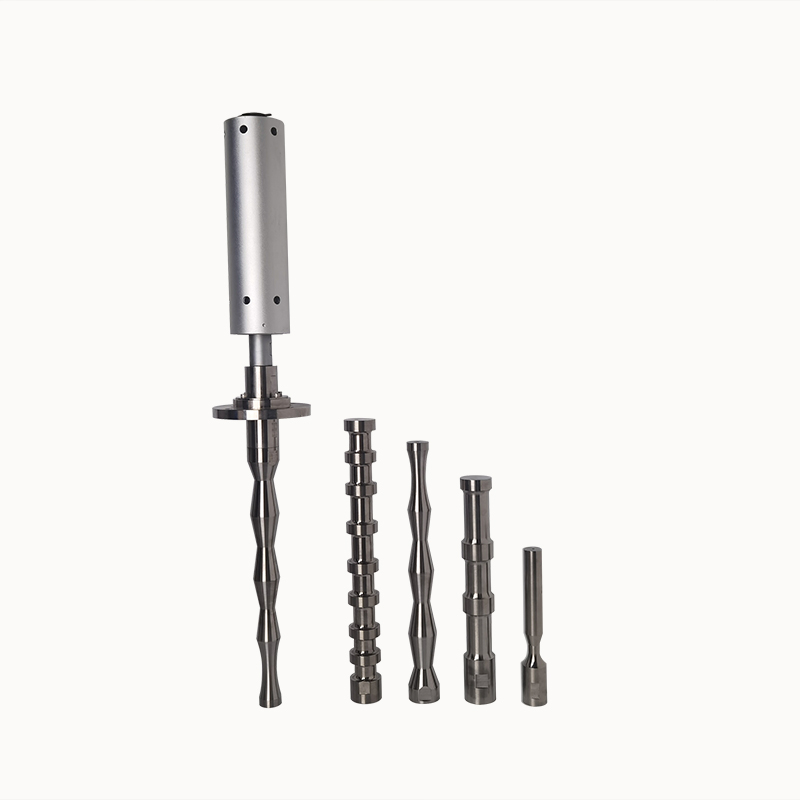
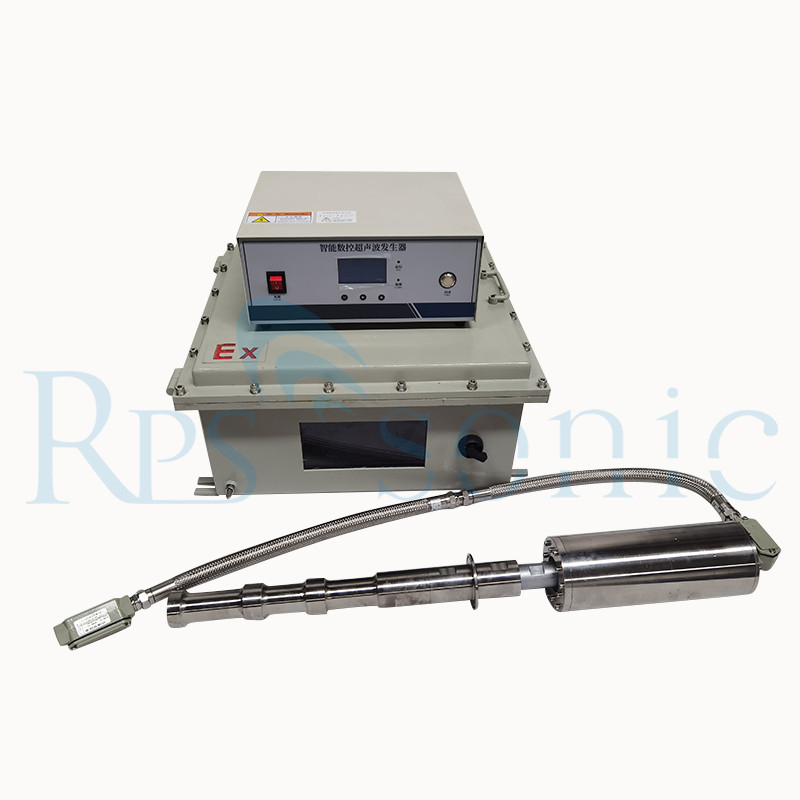
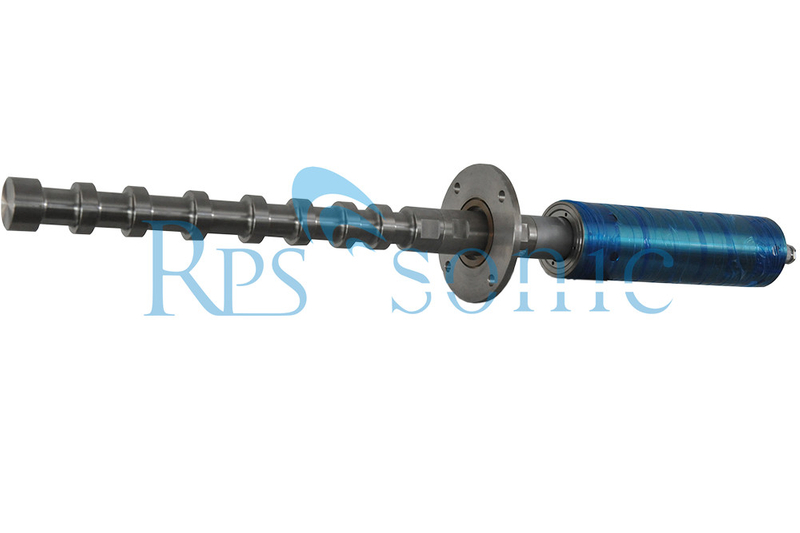
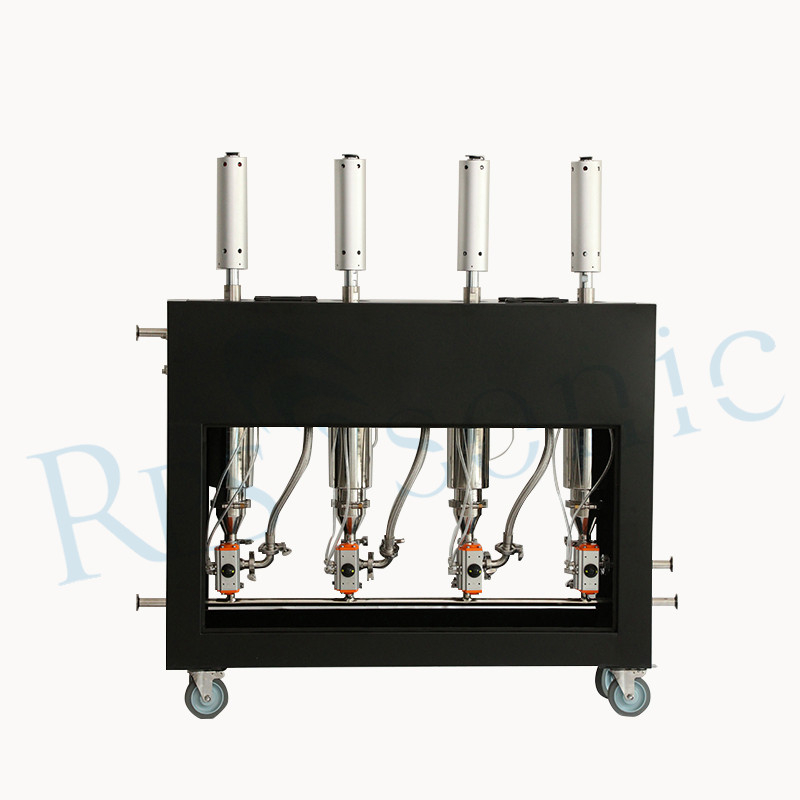
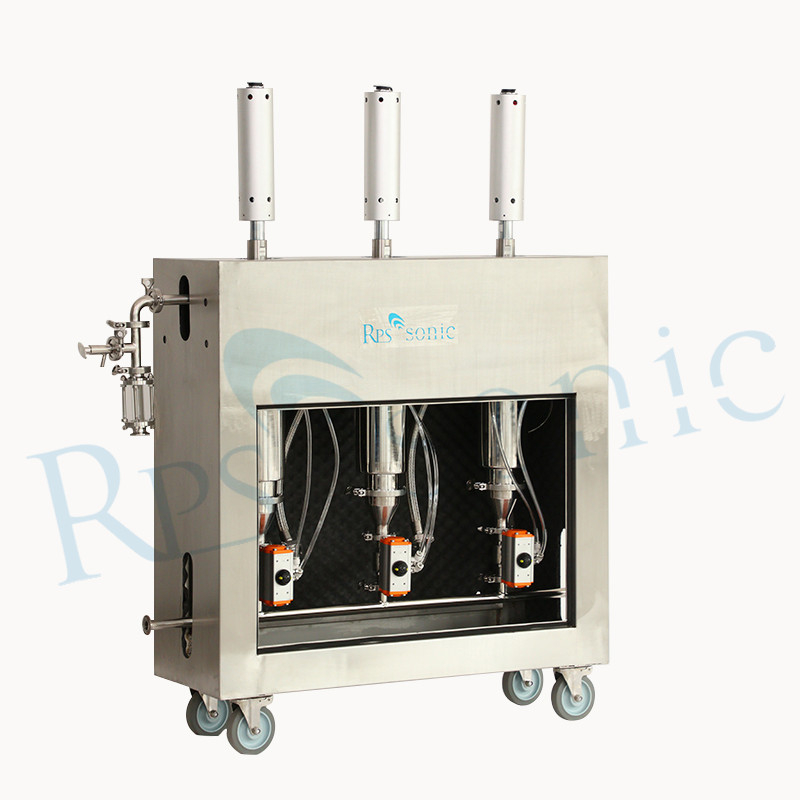
RPS-SONO20
Rps-sonic
RPS-SONO20
Ultrasonic Assisted Liquid Processors
What's the theory of ultrasonic sonochemistry?
The essence of the sonochemical effect is the cavitation effect, including the appearance of the gas nucleus, the growth of the microbubbles and the bursting of the microbubbles. Under the action of ultrasound, the fluid produces a sharp motion. Due to the change of sound pressure, the solvent is compressed and sparse. In the sparse phase region of the sound wave, the gas bubble expands and is filled with the surrounding liquid vapor or gas. In the compressed phase region, the air pockets quickly collapse and rupture, producing a large number of microbubbles, which in turn can serve as new gas cores. It is currently believed that the main reason for the influence of ultrasound on chemical reactions is that these microbubbles can generate strong shock waves when they grow up and suddenly rupture. It is estimated that when the microbubble bursts, it can generate pressures up to MPa in the local space, and the center temperature can reach 3000-5000K. The interpretation of the action of the ultrasonic field has not yet entered the molecular level, but stays in the machinery of the molecular group. The level of action mechanism. For example, the cavitation and cleansing effect on the solid surface; the emulsification of the immiscible liquid; the effect of the high temperature and high pressure caused by the shock wave in the micro space on mass transfer and energy transfer when the microbubble bursts.
Parameter
Model | SONO20-1000 | SONO20-2000 | SONO15-3000 | SONO20-3000 |
Frequency | 20±0.5 KHz | 20±0.5 KHz | 15±0.5 KHz | 20±0.5 KHz |
Power | 1000 W | 2000 W | 3000 W | 3000 W |
Voltage | 220/110V | 220/110V | 220/110V | 220/110V |
Temperature | 300 ℃ | 300 ℃ | 300 ℃ | 300 ℃ |
Pressure | 35 MPa | 35 MPa | 35 MPa | 35 MPa |
Intensity of sound | 20 W/cm⊃2; | 40 W/cm⊃2; | 60 W/cm⊃2; | 60 W/cm⊃2; |
Max Capacity | 10 L/Min | 15 L/Min | 20 L/Min | 20 L/Min |
Tip Head Material | Titanium Alloy | Titanium Alloy | Titanium Alloy | Titanium Alloy |
Application:
Sonochemistry has been used for synthesis of composites for energy storage applications,Ultrasonic sonochemistry equipment are powerful,efficient and reliable.It is widely used in industry liquid process,such as:
1. Ultrasonic Herb extraction.
2.Ultrasonic dispersion, Dispersing and milling of pigments in paint or ink.
3.Manufacturing of bio-diesel.
4.Ultrasonic Homogenize food or beverage during the mixing.
5.Emulsify the shampoo or other chemical process
6.Graphene making
7.Ultrasonic Nanoparticle Dispersion
Other liquid mixing process
For more inforation, Kindly check the catalogue as follows:
Catalogue of laboratory sonochemistry Catalogue of industry sonochemistry
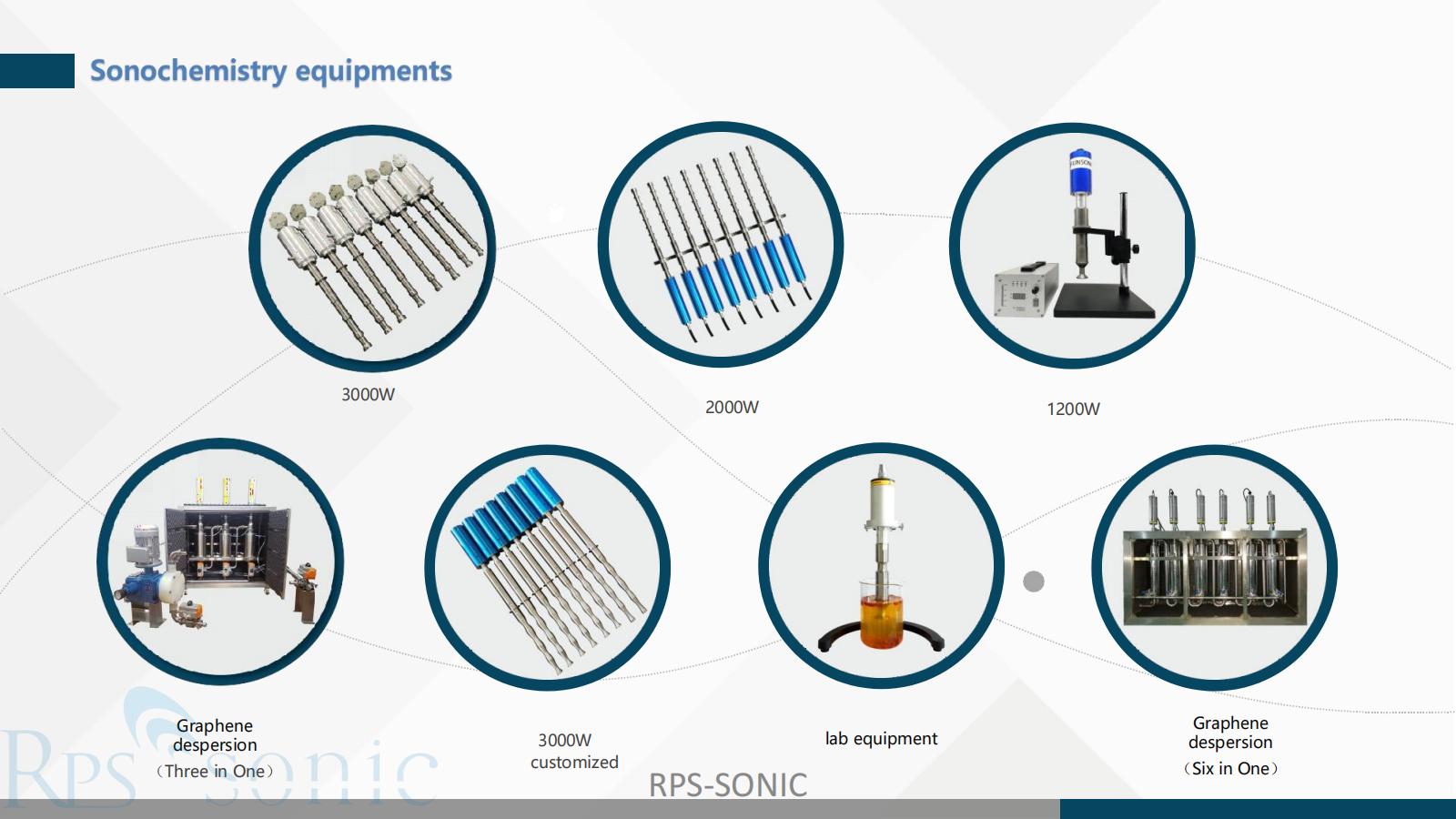

Ultrasonic Assisted Liquid Processors
What's the theory of ultrasonic sonochemistry?
The essence of the sonochemical effect is the cavitation effect, including the appearance of the gas nucleus, the growth of the microbubbles and the bursting of the microbubbles. Under the action of ultrasound, the fluid produces a sharp motion. Due to the change of sound pressure, the solvent is compressed and sparse. In the sparse phase region of the sound wave, the gas bubble expands and is filled with the surrounding liquid vapor or gas. In the compressed phase region, the air pockets quickly collapse and rupture, producing a large number of microbubbles, which in turn can serve as new gas cores. It is currently believed that the main reason for the influence of ultrasound on chemical reactions is that these microbubbles can generate strong shock waves when they grow up and suddenly rupture. It is estimated that when the microbubble bursts, it can generate pressures up to MPa in the local space, and the center temperature can reach 3000-5000K. The interpretation of the action of the ultrasonic field has not yet entered the molecular level, but stays in the machinery of the molecular group. The level of action mechanism. For example, the cavitation and cleansing effect on the solid surface; the emulsification of the immiscible liquid; the effect of the high temperature and high pressure caused by the shock wave in the micro space on mass transfer and energy transfer when the microbubble bursts.
Parameter
Model | SONO20-1000 | SONO20-2000 | SONO15-3000 | SONO20-3000 |
Frequency | 20±0.5 KHz | 20±0.5 KHz | 15±0.5 KHz | 20±0.5 KHz |
Power | 1000 W | 2000 W | 3000 W | 3000 W |
Voltage | 220/110V | 220/110V | 220/110V | 220/110V |
Temperature | 300 ℃ | 300 ℃ | 300 ℃ | 300 ℃ |
Pressure | 35 MPa | 35 MPa | 35 MPa | 35 MPa |
Intensity of sound | 20 W/cm⊃2; | 40 W/cm⊃2; | 60 W/cm⊃2; | 60 W/cm⊃2; |
Max Capacity | 10 L/Min | 15 L/Min | 20 L/Min | 20 L/Min |
Tip Head Material | Titanium Alloy | Titanium Alloy | Titanium Alloy | Titanium Alloy |
Application:
Sonochemistry has been used for synthesis of composites for energy storage applications,Ultrasonic sonochemistry equipment are powerful,efficient and reliable.It is widely used in industry liquid process,such as:
1. Ultrasonic Herb extraction.
2.Ultrasonic dispersion, Dispersing and milling of pigments in paint or ink.
3.Manufacturing of bio-diesel.
4.Ultrasonic Homogenize food or beverage during the mixing.
5.Emulsify the shampoo or other chemical process
6.Graphene making
7.Ultrasonic Nanoparticle Dispersion
Other liquid mixing process
For more inforation, Kindly check the catalogue as follows:
Catalogue of laboratory sonochemistry Catalogue of industry sonochemistry


Sonochemical reactions
Three classes of sonochemical reactions exist: homogeneous sonochemistry of liquids, heterogeneous sonochemistry of liquid-liquid or solid–liquid systems, and, overlapping with the aforementioned, sonocatalysis (the catalysis or increasing the rate of a chemical reaction with ultrasound). Sonoluminescence is a consequence of the same cavitation phenomena that is responsible for homogeneous sonochemistry. The chemical enhancement of reactions by ultrasound has been explored and has beneficial applications in mixed phase synthesis, materials chemistry, and biomedical uses. Because cavitation can only occur in liquids, chemical reactions are not seen in the ultrasonic irradiation of solids or solid–gas systems.
For example, in chemical kinetics, it has been observed that ultrasound can greatly enhance chemical reactivity in a number of systems by as much as a million-fold;[16] effectively acting to activate heterogeneous catalysts. In addition, in reactions at liquid-solid interfaces, ultrasound breaks up the solid pieces and exposes active clean surfaces through microjet pitting from cavitation near the surfaces and from fragmentation of solids by cavitation collapse nearby. This gives the solid reactant a larger surface area of active surfaces for the reaction to proceed over, increasing the observed rate of reaction.
While the application of ultrasound often generates mixtures of products, a paper published in 2007 in the journal Nature described the use of ultrasound to selectively affect a certain cyclobutane ring-opening reaction. Atul Kumar has reported multicomponent reaction Hantzsch ester synthesis in Aqueous Micelles using ultrasound.
Some water pollutants, especially chlorinated organic compounds, can be destroyed sonochemically.
Sonochemistry can be performed by using a bath (usually used for ultrasonic cleaning) or with a high power probe, called an ultrasonic horn, which funnels and couples a piezoelectric element's energy int
See also
Ultrasound
Sonication
Ultrasonics
ultrasonic homogenizer
homogenizer
Homogenization (chemistry)
Sonoelectrochemistry
Kenneth S. Suslick
Sonochemical reactions
Three classes of sonochemical reactions exist: homogeneous sonochemistry of liquids, heterogeneous sonochemistry of liquid-liquid or solid–liquid systems, and, overlapping with the aforementioned, sonocatalysis (the catalysis or increasing the rate of a chemical reaction with ultrasound). Sonoluminescence is a consequence of the same cavitation phenomena that is responsible for homogeneous sonochemistry. The chemical enhancement of reactions by ultrasound has been explored and has beneficial applications in mixed phase synthesis, materials chemistry, and biomedical uses. Because cavitation can only occur in liquids, chemical reactions are not seen in the ultrasonic irradiation of solids or solid–gas systems.
For example, in chemical kinetics, it has been observed that ultrasound can greatly enhance chemical reactivity in a number of systems by as much as a million-fold;[16] effectively acting to activate heterogeneous catalysts. In addition, in reactions at liquid-solid interfaces, ultrasound breaks up the solid pieces and exposes active clean surfaces through microjet pitting from cavitation near the surfaces and from fragmentation of solids by cavitation collapse nearby. This gives the solid reactant a larger surface area of active surfaces for the reaction to proceed over, increasing the observed rate of reaction.
While the application of ultrasound often generates mixtures of products, a paper published in 2007 in the journal Nature described the use of ultrasound to selectively affect a certain cyclobutane ring-opening reaction. Atul Kumar has reported multicomponent reaction Hantzsch ester synthesis in Aqueous Micelles using ultrasound.
Some water pollutants, especially chlorinated organic compounds, can be destroyed sonochemically.
Sonochemistry can be performed by using a bath (usually used for ultrasonic cleaning) or with a high power probe, called an ultrasonic horn, which funnels and couples a piezoelectric element's energy int
See also
Ultrasound
Sonication
Ultrasonics
ultrasonic homogenizer
homogenizer
Homogenization (chemistry)
Sonoelectrochemistry
Kenneth S. Suslick
1. Can your sonochemistry horn be used in an acid (alkali) environment?
Under the acid (alkali) environment, the horn need to be customized according to the actual working conditions of customers.
2. Can the ultrasonic sonochemistry work continuously?
Yes , it can work 24hours continue.
3. What kind of material is the horn?
Titanium alloy, we also customized ceramic horn for customer before.
4. What’s the time of delivery
For Conventional horn, 3 days, for customized horn 7 work days.
5. Does ultrasonic extraction also require the addition of a chemical catalyst?
No , but some time need Mechanical stirring.
6. What’s the advantage of ultrasonic extraction?
Decline the extraction time, and increase the extraction ratio.
7. What’s the Processing capacity of one set ultrasonic extraction equipment?
Different horn different Processing capacity, for 2000W Nine-section whip horn can dealing 2L~10L/min.
8. Are you manufacturer?
We only manufacturer the transducer and generator our-self, for the horn , we design and buy raw material ,and process by other companies.
9. What’s the warranty of your sonochemistry equipment?
All equipment one year warranty.
10. Do you have Foreign agent?
Yes, we have agent in Mexico, also We have OEM customer in USA and Germany.
11. Is it difficult to install the ultrasonic sonochemistry equipment?
No , it is easy , we will share Installation diagram, also can take install video for you.
1. Can your sonochemistry horn be used in an acid (alkali) environment?
Under the acid (alkali) environment, the horn need to be customized according to the actual working conditions of customers.
2. Can the ultrasonic sonochemistry work continuously?
Yes , it can work 24hours continue.
3. What kind of material is the horn?
Titanium alloy, we also customized ceramic horn for customer before.
4. What’s the time of delivery
For Conventional horn, 3 days, for customized horn 7 work days.
5. Does ultrasonic extraction also require the addition of a chemical catalyst?
No , but some time need Mechanical stirring.
6. What’s the advantage of ultrasonic extraction?
Decline the extraction time, and increase the extraction ratio.
7. What’s the Processing capacity of one set ultrasonic extraction equipment?
Different horn different Processing capacity, for 2000W Nine-section whip horn can dealing 2L~10L/min.
8. Are you manufacturer?
We only manufacturer the transducer and generator our-self, for the horn , we design and buy raw material ,and process by other companies.
9. What’s the warranty of your sonochemistry equipment?
All equipment one year warranty.
10. Do you have Foreign agent?
Yes, we have agent in Mexico, also We have OEM customer in USA and Germany.
11. Is it difficult to install the ultrasonic sonochemistry equipment?
No , it is easy , we will share Installation diagram, also can take install video for you.
Ms. Yvonne
sales@xingultrasonic.com
0086-15658151051
Room 1103B, Nature business building , NO.1160 GongWang Road ,FuYang, Hangzhou,Zhejiang,China